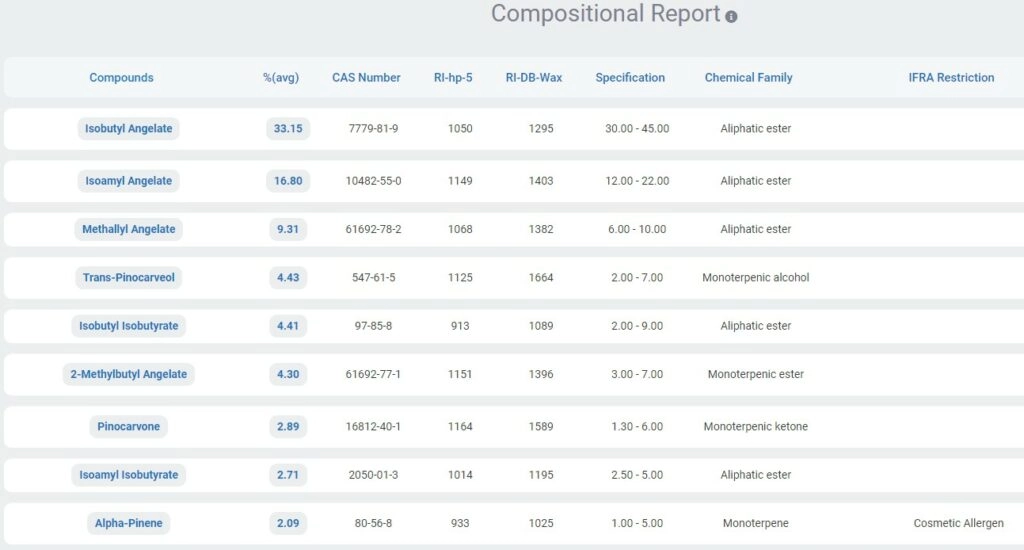| Botanical Name | Anthemis nobilis L |
| Botanical Family | Asteraceae |
| Part of the plant | Flowers |
| Cas Number | 8015-92-7 |
| FEMA Number | 2275 |
| Main Origins | Italy, France, England, Hungary. |
| Harvest Period | June – July |
Native to Europe, Africa and Asia, the Egyptians worshiped it. This Chamomile is called “Roman” because it was identified in Rome in the XVth century. Chamomile was one of the nine sacred herbs of the Saxons. Also known as English Chamomile, it is an herbaceous annual plant from 25 – 30 cm high with green-gray leaves finely cuts in strips. The word “chamomile” comes from the Greek chamaimelon, meaning “dwarf apple”. This is due to the overripe apple aroma released by this plant.
Its yellow flowers produce a light yellow liquid essential oil (with 0.2% as average yield), which sometimes has a greenish or blue color that comes from Chamazulene, a chromophore compound produced during the steam distillation process.
The oil has a sweet, herbal, cognac and slightly fruity odor profile.
CHEMICAL PROFILE
Roman chamomile oil is prone to oxidation, and should be stored in light-tight, cold conditions.
This oil may be adulterated with isobutylangelate and non-volatile material.
Although there are two varieties (“Flora pleno” and “Trenague”) and three main origins in the market (England, France and Italy), there is only one chemotype standardized. That is the reason because you could find 4 roman chamomile type depending on the growing country: Italy/France; Hungary; Germany; UK.
SAFETY NOTES
There are monographs by Monographs: NF T 75-253, FCC.
In fragrances, flavors, cosmetics and Aromatherapy (anti-inflammatory, analgesic, anxiolytic and antispasmodic).
IFRA: Permitted. Cosmetic Allergens as Limonene and Linalool.
Safety summary: Recommendation for usage levels up to 1% in fragrance concentrate



